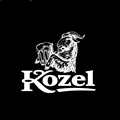Kvída the female aardvark gave birth
13. 07. 2022
The long-expected baby aardvark was born in Prague Zoo just after 9 am on Sunday. The three-day-old cub is suckling from its mother, Kvída, and, according to the keepers, it is healthy and active. Just after birth it weighed 1,450 grams and measured 54 cm in length, which is a common birth weight and size for an aardvark.

The cub is currently learning to drink breast milk on its own. It will be dependent on milk for the next ten months, but in four months it should be able to try adult food. Photo Barbora Dobiášová, Prague Zoo
“We welcomed the little aardvark on Sunday at 9.12 a.m., the birth was quick, the cub first drank from its mother around noon and now it’s trying to suckle every hour or so. We don't know its sex yet, it will be revealed by DNA analyses of its fur,” said Miroslav Bobek, the director of Prague Zoo.
It is quite difficult to raise aardvarks in captivity, so, in the first days after birth, the keepers continuously watch over it and its mother to ensure that it drinks regularly and that the female does not inadvertently lie on it. The first four days of life are crucial for successful rearing.
“For her species, Kvída is doing a great job of looking after her cub - she often lies down so that it can drink, licks it and stimulates it to excrete,” said Barbora Dobiášová, the curator of ungulates, describing the female aardvark’s maternal care.
So far, seventeen-year-old Kvída has successfully raised three cubs, the father of the latest one, as with all the previous ones, is the thirteen-year-old male Draco. The first joint offspring was successfully reared seven years ago in 2015; the male, Kito, now lives in Randers Zoo in Denmark. A year later, the female Nyota was born and now lives in Olomouc Zoo. The third cub, bred in 2018, was the female Sawa, she now lives at Shepreth Wildlife Park in the UK.
This African mammal is active mainly at night, during the day it sleeps in its burrow. It also uses its powerful claws to break into the termite mounds and anthills whose inhabitants it feeds on. This feeding specialisation adds to the reasons it is difficult to keep, and it is therefore one of the rarest species to be seen in captivity. Aardvarks live solitary lives, which is why, except for the mating season, the female Kvída and the male Draco have separate enclosures at Prague Zoo. Currently the exhibit is temporarily covered so that the cub and its mother can have peace and calm. Visitors can still watch Draco in his separate quarters in the African House in the upper part of the zoo’s grounds.








